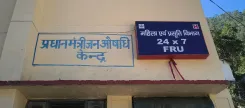What Has Been the Impact of ISI and Bangladesh’s Demographic Strategy on India Since 1971?

Synopsis
Key Takeaways
- Demographic changes in border areas threaten national security.
- This is a long-standing issue tied to the 1971 war.
- ISI and Jamaat-e-Islami's roles are central to the infiltration strategy.
- States like West Bengal and Assam are significantly impacted.
- Immediate action is necessary to combat this unfolding crisis.
New Delhi, Aug 15 (NationPress) In his Independence Day speech, Prime Minister Narendra Modi highlighted the demographic shifts affecting the nation. He emphasized that such changes in border regions pose a significant threat to national security.
The Prime Minister labeled this trend as a calculated scheme aimed at transforming the nation, asserting that the seeds of a new crisis are being planted.
His comments coincide with ongoing initiatives in Bangladesh, aided by the ISI, to escalate unlawful infiltrations into India.
It is crucial to recognize that this is part of a long-standing scheme conceived by the ISI and DGFI after the 1971 conflict.
Following their defeat in the 1971 war, the Pakistanis understood that engaging in direct confrontation with India was unfeasible.
The outcome of this war led to the emergence of Bangladesh, prompting the ISI and DGI to enlist the Jamaat-e-Islami in an economic offensive against India.
This strategy aimed at altering demographics in various regions of India through illegal migration. Initially slow, this process gained momentum in the early 1980s.
By the 1990s, the situation had escalated into a major issue.
The demographic composition in states like West Bengal and several northeastern areas had transformed significantly. The Jamaat focused on border regions with a Hindu majority, leading to a gradual reduction of Hindus in these territories and inciting communal unrest.
In 1992, the Research and Analysis Wing was assigned to execute operations in Bangladesh targeting Jamaat interests.
This operation primarily aimed to thwart the Jamaat's significant plans of infiltrating Bangladeshis into India.
The intelligence agency identified a motive behind these activities: the creation of a Greater East Pakistan encompassing West Bengal and neighboring northeastern states.
Achieving this goal required establishing a demographic majority in these regions. West Bengal has been particularly affected by this issue.
The most notable demographic changes have occurred in districts such as Murshidabad, Uttar Dinajpur, Malda, and North and South 24 Paraganas.
Assam is also witnessing similar challenges, with significant shifts in Dhubri, Barpeta, Goalpara, and Morigaon districts. During the 1992-1993 operations, the Research and Analysis Wing uncovered a substantial conspiracy threatening India’s internal security.
Widespread infiltrations and demographic alterations resulted in job losses for locals, rising communal tensions, and in many cases, these infiltrators were linked to terror groups operating from Bangladesh. The agency found evidence of numerous camps established by the Jamaat to facilitate these actions.
Thus, it was determined to be a systematic and intentional effort to undermine India.
Amar Bhushan, a former R&AW officer, notes that the situation is particularly alarming in West Bengal. He believes that following the 1971 conflict, this matter should have been addressed with greater urgency.
Some estimates indicate that illegal immigration from Bangladesh surged by approximately 160 percent between 1971 and 1996, according to Bhushan.
Intelligence agencies warn that with the ISI regaining influence in Bangladesh under a sympathetic regime, they are likely to intensify their post-1971 agenda.
This would not only facilitate an increase in the number of Bangladeshis crossing into India but also involve establishing terror camps.
Agencies emphasize that the current issue extends beyond the eastern states.
It has expanded to Karnataka, Kerala, Uttarakhand, and numerous other regions. This situation should be regarded as a security threat and a significant conspiracy rather than merely a humanitarian crisis, according to agency assessments.









